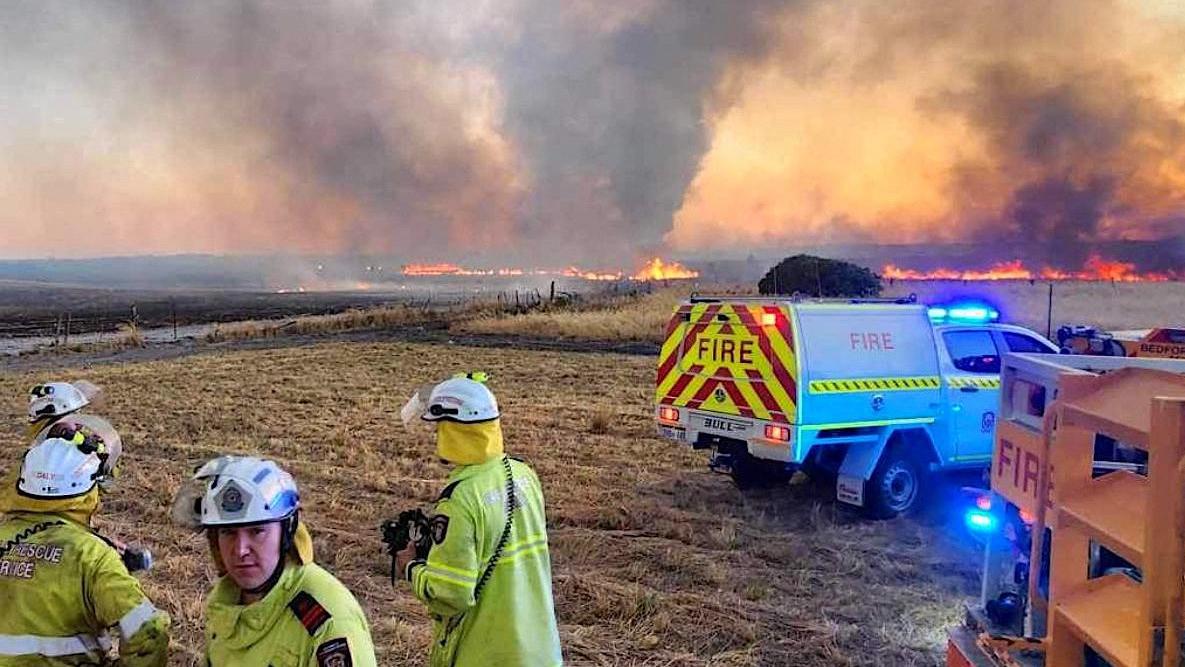 In this photo released by the Western Australia Department of Fire and Emergency Services (DFES) and received by AFP on Nov 23, 2023, shows firefighters watching a bushfire burn north of the city of Perth. (HANDOUT / WESTERN AUSTRALIA DEPARTMENT OF FIRE AND EMERGENCY SERVICES VIA AFP)
In this photo released by the Western Australia Department of Fire and Emergency Services (DFES) and received by AFP on Nov 23, 2023, shows firefighters watching a bushfire burn north of the city of Perth. (HANDOUT / WESTERN AUSTRALIA DEPARTMENT OF FIRE AND EMERGENCY SERVICES VIA AFP)
SYDNEY - Large swaths of Australia sweltered again on Sunday through a widening heatwave, which the national weather forecaster said raised the bushfire risk in an already high-risk fire season as the country endures an El Nino weather pattern.
"Extreme" heatwave alerts, the highest danger rating, were in place for a second day for parts of Western Australia and were extended to South Australia, while areas of Queensland, New South Wales and the Northern Territory were under "severe" warnings, the forecaster said.
The last two bushfire seasons in Australia have been subdued compared with the 2019-2020 "Black Summer" when bushfires destroyed an area the size of Türkiye, killed 33 people, 3 billion animals and trillions of invertebrates
It cautioned that in Western Australia, the nation's largest state geographically, the remote Pilbara and Gascoyne areas could hit the high forties Celsius (up to 120 degrees Fahrenheit) on Sunday.
ALSO READ: Western Australia in 'extreme' heat wave, raising bushfire risk
In the Pilbara mining town of Paraburdoo about 1,500 km (930 miles) north of the state capital Perth, a high of 48 C was forecast, more than seven degrees above the average January maximum, according to forecaster data. It was 45.7 C at 12:30 pm (0430 GMT).
Australia's highest recorded temperature, 50.7 C, was logged at the Pilbara's Onslow Airport on Jan 13, 2022.
In the West Australian town of Meekatharra, Royal Mail Hotel manager Alex McWhirter said the heat could "cook you alive".
"You have the sun beating down from above, you've got the hot ground heating you from below and it is quite a challenge," the 29-year-old English national said. "I'm not sure that I want to try and go to bed tonight in 50 degrees without an aircon."
READ MORE: Australia grapples with weather extremes
On the east coast, parts of New South Wales' capital Sydney were forecast on Sunday to reach 40 C, almost 10 degrees above the average January maximum. In the city's west, it was 37.9 C (100 F) at 3:30 pm (0430 GMT).
The hot, dry conditions raised the risk of bushfires in some areas, the forecaster said, during the El Nino, which is typically associated with extreme phenomena such as wildfires, cyclones and droughts.
The last two bushfire seasons in Australia have been subdued compared with the 2019-2020 "Black Summer" when bushfires destroyed an area the size of Türkiye, killed 33 people, 3 billion animals and trillions of invertebrates.


